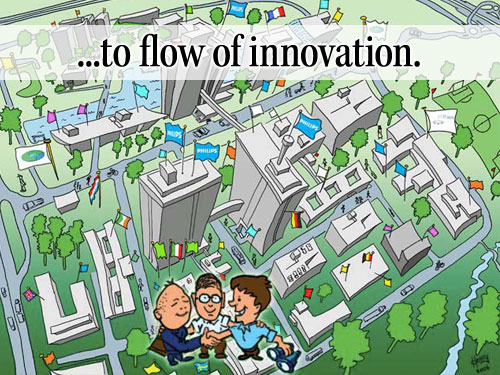By: Karin Wall
Leading companies in Europe have abandoned their old and more or less closed systems, and are building new eco systems that include collaboration with academies, suppliers and sometimes even competitors to create more value for their customers. These companies are examples of a successfully managed innovation process.
There is a growing recognition that innovation needs to be managed if it is to be successful – and on reflection this is not so surprising. No one would argue that there is no need to manage marketing activities to be successful in marketing, or that there is no need to manage one’s finances in order to get the most out of investments and other financial aspects.
From a historical perspective, though, innovation management as a distinct area, is relatively new. It is only in the last few years that innovation has become an organized management area in large international companies.
As GBD Bindra, Global Innovation Director of Logica, expressed it in a recent interview with us:
– Innovation management as a function has gone through a revolution in the last five years. It is now much more structured; you can now create processes around it, set clear targets around it, measure it. And I would also say that the role of chief innovation officer, or its equivalent, is a relatively new position in companies.
According to Jørn Bang Andersen, Senior Advisor on Innovation to the five Nordic governments, companies’ returns on innovation or hit rates are somewhere between 2% and 10%. That is another way of saying that around 90% of all innovation efforts are never commercialized or exploited. If companies could raise the returns on innovation even just to 10%-20% this would give them significant advantage in the global competition.
The obvious conclusion to be drawn is that if companies were to start approaching innovation in a more systematic way, they could increase their returns on innovation investment at no or small additional cost.
The obvious conclusion to be drawn is that if companies were to start approaching innovation in a more systematic way, they could increase their returns on innovation investment at no or small additional cost.
We can see that leading companies in Europe, such as Intel, SAP and Philips, have abandoned their old, more closed systems and are building eco systems that include collaboration with research institutes, universities, suppliers and sometimes even competitors to create more value for their customers. We saw several examples of this when we visited the Fraunhofer open innovation-event in Stuttgart, Germany. We are in a fast changing world in terms of how companies are organizing themselves in order to create the best possible value propositions.


We think of InnovationManagement.se as an important source of knowledge and inspiration. Our aim is to promote and diffuse knowledge about how you can operate and lead the innovation process in your organization in order to become more competitive and more successful. We are working towards opening the IM Store™ which will offer cost efficient tools and ways of acquiring the skills required to manage your innovation activity in a more structured way.
As always, we are very interested in hearing what you, our readers, have to say and welcome your responses and comments.
Karin Wall
Chief Editor
